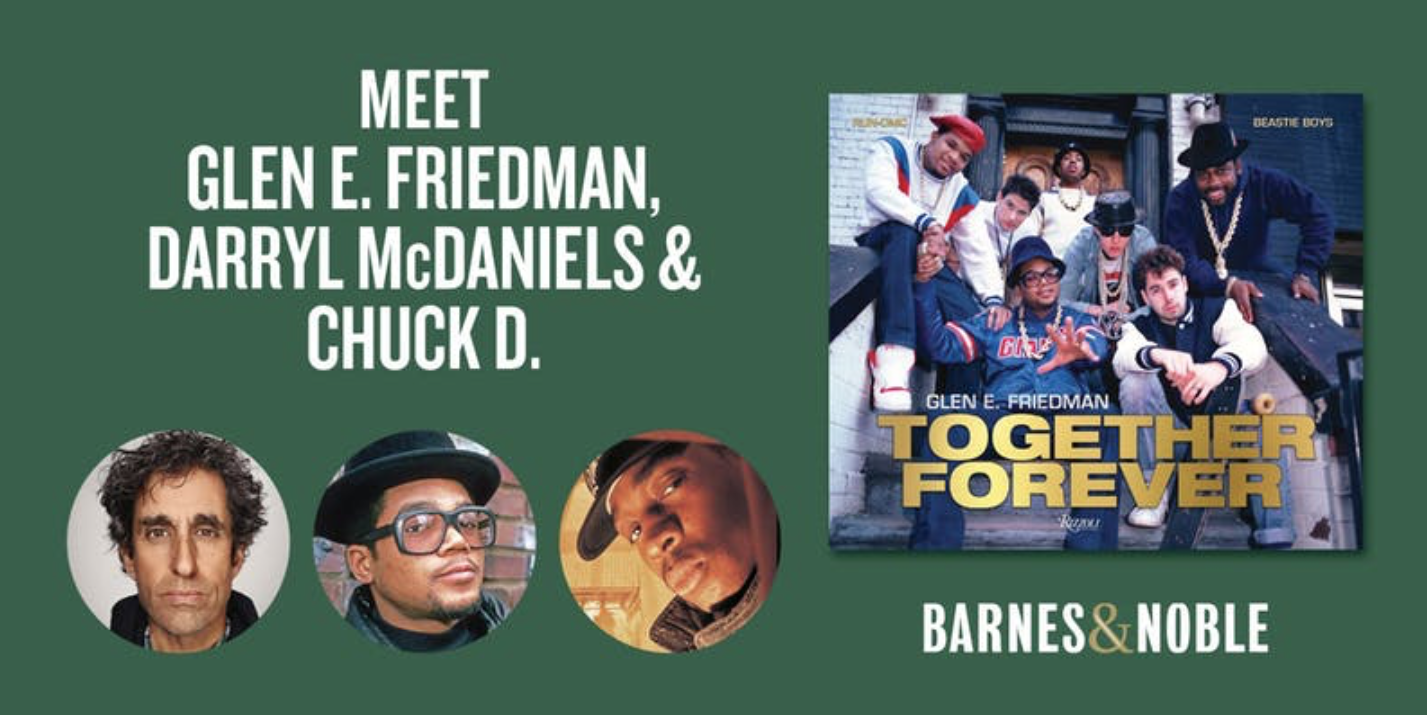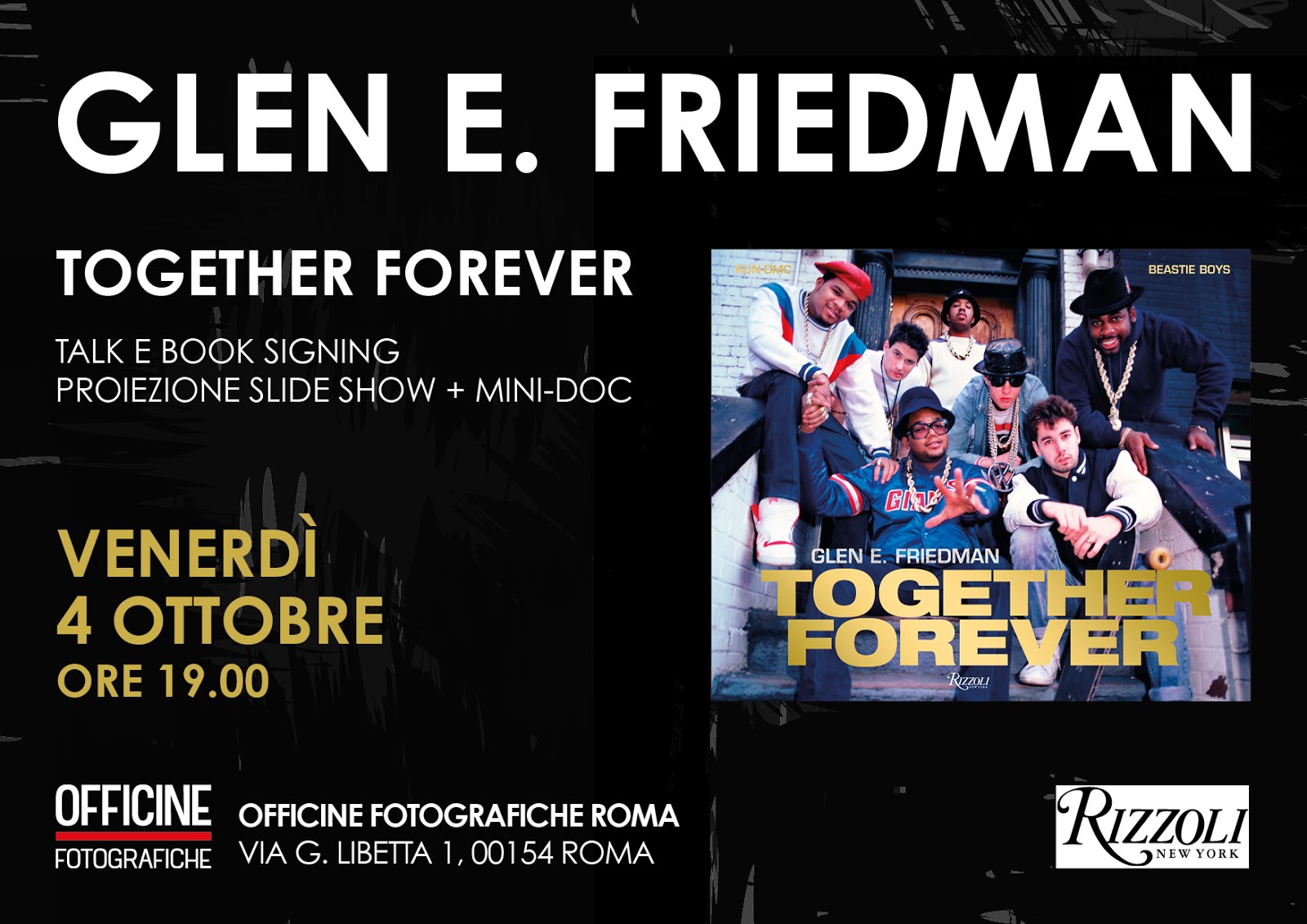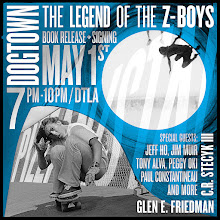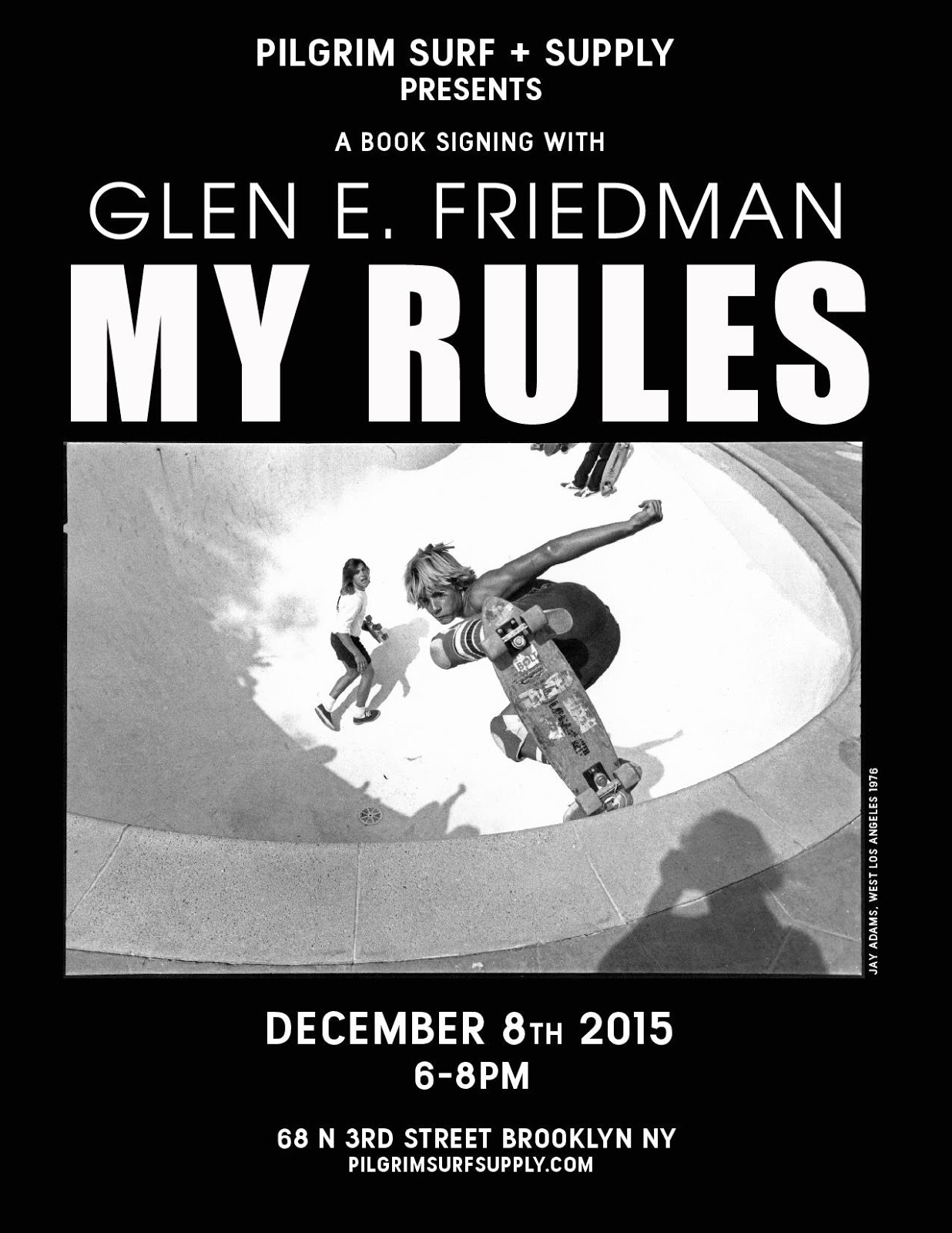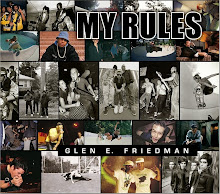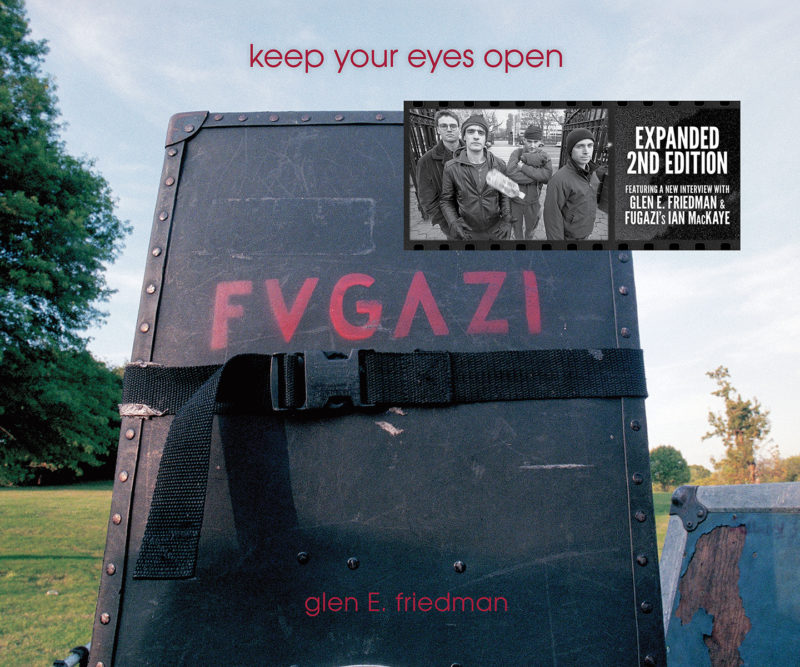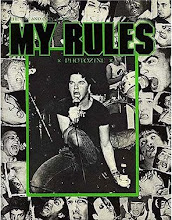Eastern philosophy has all the same goals as Western philosophy: it too seeks to make us wiser and more serene. However, the way it goes about its task shows a great deal more variety and imagination: in the East, there are lessons to be learnt in tea ceremonies, in flower arranging, in the repair of vases and in the ritual contemplation of rivers. An introduction to six of the most fascinating concepts of Eastern philosophy.
Monday, April 30, 2018
School of Life Monday:
Six Ideas From Eastern Philosophy
Labels:
"school of Life",
buddha,
Eastern Philosophy,
life,
philosophy
Sunday, April 29, 2018
Public goods are REALLY good: thousands of years later, the Roman roads are still paying dividends
from Boing Boing:


Social scientists often promote the value of public provision of infrastructure as a sound, long-term investment in development and prosperity, pushing back against the neoliberal tendency to abandon public goods in favor of private development.
Researchers at the Centre for Economic Policy Research examined the amount of light emitted in territories adjacent to network of roads built millennia ago to service the Roman Empire, using light as a proxy for development and prosperity, comparing the light levels to light emitted by other parts of Europe, both those that were never part of the Roman Empire, and parts that the Empire conquered but did not extend their road network to.
They found that the advantages of a public good -- as opposed to Roman rule or other factors -- persist for thousands of years, with benefits that are literally visible from space, with the naked eye.
In some ways, the emergence of the Roman road network is almost a natural experiment – in light of the military purpose of the roads, the preferred straightness of their construction, and their construction in newly conquered and often undeveloped regions. This type of public good seems to have had a persistent influence on subsequent public good allocations and comparative development. At the same time, the abandonment of the wheel shock in MENA appears to have been powerful enough to cause that degree of persistence to break down. Overall, our analysis suggests that public good provision is a powerful channel through which persistence in comparative development comes about.On Roman roads and the sources of persistence and non-persistence in development [Carl-Johan Dalgaard, Nicolai Kaarsen, Ola Olsson and Pablo Selaya/CERP]
(via Naked Capitalism)
Saturday, April 28, 2018
New Podcast I did recently with "Missing Words"

In the fifth episode of Missing Words, we sat down with famed photographer Glen E. Friedman
Friedman has created some of the most iconic music, pop culture, and skateboarding photography since the mid-seventies.
His highly referenced books Fuck You Heroes, Fuck You Too, The Idealist, and My Rules showcased and presented worlds that were not being given the spotlight at that time. From Tony Alva to Stacy Peralta; Black Flag to Minor Threat; Bad Brains to Fugazi; Beastie Boys to Public Enemy; and Run-DMC to LL Cool J. His work has only become more influential over time and his style is often replicated but never truly duplicated.
We discussed how to get and process the news in the midst of a non-stop media blitz during Trump and the dangerous of fighting political allies. Also, the tactics and unspoken rules of taking photos at concerts, his life in CA and NYC, and much more.
Check out episode 5 below.
MISSING WORDS PODCAST original post
Labels:
GEF,
Interview,
missing words,
Podcast
Friday, April 27, 2018
Thursday, April 26, 2018
Bernie Sanders' New Deal:
ending involuntary unemployment with guaranteed $15/hour infrastructure jobs
from Boing Boing:


Bernie Sanders has a plan to solve America's wage stagnation and its long-neglected infrastructure: tax the super-rich and massively profitable corporations, then use the money to fix the multi-trillion-dollar infrastructure overhand left behind by decades of neglect, and hire Americans at $15/hour, plus full healthcare, to do the work.
Business leaders have protested that this will make it hard for them to retain employees who are paid below-living wages and who don't get health care. They've threatened to fire all their low-waged employees and replace them with robots.
Sanders hasn't responded, but the solution is obvious: tax the robot-owners and use the money to hire their former workers to fix our nation's crumbling roads, dams, waterworks, power-lines, schools, and other public infrastructure.
Job guarantee advocates say their plan would drive up wages by significantly increasing competition for workers, ensuring that corporations have to offer more generous salaries and benefits if they want to keep their employees from working for the government. Supporters say it also would reduce racial inequality, because black workers face unemployment at about twice the rates of white workers, as well as gender inequality, because many iterations of the plan call for the expansion of federal child-care work.
“The goal is to eliminate working poverty and involuntary unemployment altogether,” said Darrick Hamilton, an economist at the New School who has advocated for a jobs guarantee program along with Stony Brook University's Stephanie Kelton and a group of left-leaning economists at the Levy Economics Institute at Bard College. “This is an opportunity for something transformative, beyond the tinkering we've been doing for the last 40 years, where all the productivity gains have gone to the elite of society.”
Others, including some Democrats, are not convinced. The idea is also dead on arrival with Republicans in control of Congress, and conservatives have trashed the idea of a jobs guarantee as impractical, impossibly expensive and dangerous to the private sector.
“It completely undercuts a lot of industries and companies,” said Brian Riedl, of the conservative-leaning Manhattan Institute, a think tank. “There will be pressure to introduce a higher wage or certain benefits that the private sector doesn't offer.”
Bernie Sanders to announce plan to guarantee every American a job [Jeff Stein/Washington Post]
Labels:
bernie sanders,
Business,
employment,
jobs,
work
Wednesday, April 25, 2018
What if humans weren't the first civilization on Earth?
from Boing Boing:


Is it possible that modern humans aren't the first civilization on Earth?
This is the insanely interesting question probed by "The Silurian Hypothesis", a new paper authored by Gavin A. Schmidt and Adam Frank, two NASA scientists.
As they point out, if an industrialized civilization existed in the deep past, it's not clear there'd be easily recognizable traces of it. Our geologic record doesn't go back any further than the Quaternary period of about 2.6 million years ago. "Go back much farther than the Quaternary," as Frank writes in an essay about the paper in the Atlantic, "and everything has been turned over and crushed to dust."
It's not even clear we'd find fossilized remains of a previous civilization, because while museumgoers might think that fossils are reasonably common, they're actually incredibly rare. A near-zero percentage of life on earth has ever been fossilized. A civilization could last what seems -- to us -- like a super-long time and still not produce any fossils, as Frank notes:
So, could researchers find clear evidence that an ancient species built a relatively short-lived industrial civilization long before our own? Perhaps, for example, some early mammal rose briefly to civilization building during the Paleocene epoch about 60 million years ago. There are fossils, of course. But the fraction of life that gets fossilized is always minuscule and varies a lot depending on time and habitat. It would be easy, therefore, to miss an industrial civilization that only lasted 100,000 years—which would be 500 times longer than our industrial civilization has made it so far.
The upshot is that Frank and Schmidt wind up focusing on the chemical traces of an advanced civilization. If previous lifeforms industrialized and began making stuff the way we do, you might see suspiciously large buildups of, say, nitrogen (in our case, from fertilizer) or rare-earth minerals (in our case, from making electronic gadgets).
Indeed, the truly massive chemical signal you might see is the shift in carbon that comes from burning fossil fuels -- and its attendant global warming. The scientists here study the Paleocene-Eocene Thermal Maximum, a period 56 million years ago where the global average temperature rose 15 degrees higher than today. The spike in carbon and oxygen isotope ratios was, they conclude, very much like what you'd see if an industrial society burned fossil fuels the way we do. But the thing that's different is the speed: The rise in atmospheric C02 these days is much, much sharper than the incline back then.
The upshot, Frank writes, is that the evidence doesn't really suggest a previous civilization existed. But engaging in the counterfactual is useful for pondering our modern society, and the detritus we're producing ...
It’s not often that you write a paper proposing a hypothesis that you don’t support. Gavin and I don’t believe the Earth once hosted a 50-million-year-old Paleocene civilization. But by asking if we could “see” truly ancient industrial civilizations, we were forced to ask about the generic kinds of impacts any civilization might have on a planet. That’s exactly what the astrobiological perspective on climate change is all about. Civilization building means harvesting energy from the planet to do work (i.e., the work of civilization building). Once the civilization reaches truly planetary scales, there has to be some feedback on the coupled planetary systems that gave it birth (air, water, rock). This will be particularly true for young civilizations like ours still climbing up the ladder of technological capacity. There is, in other words, no free lunch. While some energy sources will have lower impact—say solar vs. fossil fuels—you can’t power a global civilization without some degree of impact on the planet.By the way, Doctor Who fans will no doubt recognize the reference in the title of "The Silurian Hypothesis" -- Silurians being a race of humanoid reptiles (picture above) that appeared originally back on the show in the 70s, and, as the lore goes, existed millions of years before humanity.
Labels:
COUNTERFACTUALS
Tuesday, April 24, 2018
MY THREE SONS:
‘GENERAL BOY’ TALKS ABOUT HIS SONS IN DEVO
from Dangerous Minds:


A recent DEVO fandom YouTube-rabbit-hole led me to a late 80s interview with Robert Mothersbaugh, Sr., father of DEVO members Mark and Bob Mothersbaugh. I found myself enamored with this interview which was not in-and-of-itself emotional in any way, but it inspired great emotion in me, as a viewer, watching this extremely straight-laced midwestern granddad describe his sons’ band and his pride in their accomplishments. For as subjectively weird of a band as DEVO were, Mr. Mothersbaugh’s almost-folksy, matter of fact descriptions of the band and their philosophy are extremely charming.
Mothersbaugh, who played the character of “General Boy” in a handful of DEVO videos and short films, explains how he was originally roped into playing the character: He was given the part when another actor couldn’t (or refused) to make it to a DEVO film shoot and it just so happened that the military jacket costume fit him.
In the interview which takes place around the time of the Now It Can Be Told album, Mothersbaugh discusses his opinions on changes in DEVO’s sound, explaining that he feels the sound of the band at that time was returning more to their roots, and that it had previously become in his words “too mechanized”—probably referring to the albums Oh No, It’s DEVO and Shout.
He talks about supporting “one hundred and one percent” the fledgling band, which included not just his sons Mark and Bob, but also his son Jim, DEVO’s second drummer before Alan Myers. He goes into some detail about Jim’s invention of synthesized drums for the band before going to work for the Roland company, developing MIDI technology.
He talks a bit about his granddaughter, Alex, being in the DEVO offshoot band Visiting Kids.
When asked about his son Mark’s artwork, the elder Mothersbaugh describes his son as a “genius” and later describes one of his fondest memories as seeing his sons “entertaining” on television for the first time.
If you are a DEVO fan, this charming interview is well worth your time.
Labels:
dad,
DEVO,
father,
General boy,
Mr. Motherbaugh
Monday, April 23, 2018
School of Life Monday:
The True and the False Self
A good life is one in which we can dare to show our True Self and do not mind too much occasionally having to wear the mask of a False Self. But for this to be possible, we need a certain sort of childhood - as the masterful British psychoanalyst Donald Winnicott helped to explain in his theory of the true and the false self, outlined here.
“One of the most surprising but powerful explanations for why we may, as adults, be in trouble mentally is that we were, in our earliest years, denied the opportunity to be fully ourselves, that is, we were not allowed to be wilful and difficult, we could not be as demanding, aggressive, intolerant, and unrestrictedly selfish as we needed to be. Because our caregivers were preoccupied or fragile, we had to be preternaturally attuned to their demands, sensing that we had to comply in order to be loved and tolerated; we had to be false before we had the chance to feel properly alive. And as a result, many years later, without quite understanding the process, we risk feeling unanchored, inwardly dead and somehow not entirely present…”
Labels:
"school of Life",
false self,
psychology,
pure self,
self,
sociology
Sunday, April 22, 2018
Atita Verghese & Lizzie Armanto: Power Of Girls Skateboarding In India
In India, girls have always played by society’s rules. But Atita Verghese has a new vision for girls. Here, she teams up with professional skateboarder Lizzie Armanto to show local girls how skateboarding can be more than just a sport - it can teach them to be whatever, choose whatever, and do whatever feels true to them.
"India" by Amritha Vaz / Nice Manners
"Tabla Drums" by Uday Deshpande (Ramdas)
"Billions of Eyes" by Lady Lamb
“Banshee Beat” by Animal Collective
Labels:
girls,
india,
skateboarding,
women
Saturday, April 21, 2018
Friday, April 20, 2018
"IT AIN'T ALL ABOUT YOU "
My latest interview
From Itchy Silk

Glen E Friedman is a social activist and the photographers’ photographer. His name resounds with clarity inside (and outside) photography and it pulsates with a verve even stronger than it was in 1976 when he started making images of those vibrant sub-cultures: cutting his teeth with Skateboarding and progressing into Punk and Hip-Hop as each began to surface to significance, no doubt in part, thanks to his “voice”.
Like so many who have become an integral part of the fabric of a given period, Glen E Friedman’s interest in photography started as a hobby. The documentation of these sub-cultures ‘quickly’ became a ‘passion’ as it appealed to his need/wish to give his ‘vision a loud voice’. The decibels of that ‘vision’ are set firmly on high.
Iconic, generation defining images of names and important moments from those sub-cultures ensued. But Glen E Friedman’s impact however goes far beyond documenting sub-cultures. It is fair to say that in many respects he helped shape youth culture in those periods where his photographic documentation was intense.
Now in 2018 while his name remains a constant in the photographic world his socially active voice seems even louder and clearer. Indeed, Glen E Friedman seems more intent to push ideas with an anti-establishment bias. Perhaps in these times where ‘we’ are bludgeoned to death by mass media’s agendas on everything from whether to bomb the fuck out of Syria or not and in times where the obfuscation from politicians is even more pronounced-we need an anarchic voice for us to collectively state; ‘fuck your truth we will find our own truth.’

Can you name a moment, image or person that created your initial spark for the creative disciplines and indeed what was it about that moment, image or person that helped light the fire?
No, I cannot, except to say, when I felt that something was going on around me that was happening nowhere else on earth that I have heard of, it inspired me. I was excited and stoked. I wanted others to feel it the way I did. It felt revolutionary because it was!
As a photographer what was it about your formative years that helped to lay the foundation for your interest in photography-in hindsight were you destined to pursue this career?
No, not at all-photography was a hobby, but it became a passion very quickly once I realized it gave my vision a loud voice. Once I noticed it articulated my visions to solid proof I got energized and confident, that what I was seeing and what I was doing with the tool (camera) was worthy and maybe even somehow important.

Do you ever wonder who or what Glen E Friedman would be if he were not in photography-what could you have been?
Not really. I don’t have the time to think about it in such personal abstract ways. When I ponder or wonder it’s about more worldly things like what if humans don’t fix the environment, what or why did we as a species even evolve as we have, what’s going to happen to us is my biggest curiosity?
The youth cultures/counter cultures you captured appeared to have some ethereal and concrete cause how did you capture that essence in your work and what images do you think best showed that?
I captured, or should I more accurately say I framed those moments in my own idealized way because they inspired me. I saw urgency and importance, and I saw and learned that to really inspire others they needed to be framed properly. It helps outsiders relate and helps practitioners to respect and cherish. It was and is about accuracy and beauty, not just mere show and tell-it’s about going beyond the standard ‘capture’ school of thought. Fuck that mediocrity you got to go beyond to be heard, to be seen, to change.

Your bio talks about your ‘science of defiance’ with figures like Ice T. How important was that period in terms of Hip-Hop and the socio-political climate at the time-what was the essence of what you were trying to capture?cont.
I was attempting to help others tell their stories, to share their culture with the outside world. It was about bringing; understanding, consideration, education, love, and integrity. “Keeping it Real” was the slogan. I became one of the biggest proponents of this idea. I believed, lived and enjoyed the art and action that I saw going on around me immensely. Sharing it with the quality of images the culture deserved it was my personal responsibility at that point. I had had success prior with the cultures of, Skateboarding and Punk Rock and exposing and inspiring others. It expanded even further, past my own first-hand experiences to those of my new friends and the new music that was teaching and inspiring me.
Click HERE: http://itchysilk.com/glen-e-friedman-it-aint-all-about-you/ for the rest of the interview
Labels:
GEF,
hiphop,
Interview,
Photography,
Politics,
Punk,
skateboarding
Thursday, April 19, 2018
Wednesday, April 18, 2018
Tuesday, April 17, 2018
SkateBoarder magazine on my Instagram
A post shared by glen E. friedman Ⓥ (@glenefriedman) on
Labels:
GEF,
skateBoarder imagine,
tony alva
Monday, April 16, 2018
Happy Birthday Ian Mackaye!
Happy Birthday to one of my favorite people I've ever known.
Let's watch a little talk from a couple of years ago.
myself and Ian 20years ago, here in the East Village!
Half Frame photograph made by Cynthia Connolly

Let's watch a little talk from a couple of years ago.
myself and Ian 20years ago, here in the East Village!
Half Frame photograph made by Cynthia Connolly

Labels:
Ian MacKaye
Sunday, April 15, 2018
FCC approves SpaceX’s ambitious satellite internet plans
Starlink is well on its way to serving customers on Earthfrom TheeLeverage.com

The Federal Communications Commission today granted SpaceX a license to operate an array of broadband internet satellites, marking the first time the government agency has given the green light for a US-licensed low-Earth orbit broadband service. SpaceX co-founder and CEO Elon Musk has been discussing a micro-satellite constellation for providing broadband internet for years, and in 2017 the company began accelerating its efforts by meeting regularly with the FCC and applying for a license that would allow it to operate in an unused portion of the FCC-regulated broadband spectrum. The company plans to call the service Starlink.
Earlier this year, SpaceX launched the first two of its planned 12,000-satellite constellation. It appears that the company is starting out with a 4,425-satellite array, with the FCC requiring it launch at least half of those units within the next six years. “With this action, the Commission takes another step to increase high-speed broadband availability and competition in the United States,” the FCC said in a statement to CNBC. SpaceX is slated to start launching operational satellites for the network starting next year, when it will be going head to head with competing space internet provider OneWeb.
”We appreciate the FCC’s thorough review and approval of SpaceX’s constellation license. Although we still have much to do with this complex undertaking, this is an important step toward SpaceX building a next-generation satellite network that can link the globe with reliable and affordable broadband service, especially reaching those who are not yet connected,” Gwynne Shotwell, SpaceX’s president and chief operating officer, said in a statement given to The Verge. SpaceX hopes Starlink may become a big revenue generator that can help offset R&D and operations costs for the rocket company. Financial projections, disclosed by The Wall Street Journal last year, show SpaceX expects more than 40 million subscribers for Starlink by 2025, equaling roughly $30 billion in revenue.
Saturday, April 14, 2018
Early Beastie Boys photo
from my Instagram
A post shared by glen E. friedman Ⓥ (@glenefriedman) on
Labels:
Beastie Boys,
GEF,
photograph,
rare
Friday, April 13, 2018
Lions ate suspected poacher
 file photo.
file photo.Lions near South Africa's Kruger National Park ate a suspected poacher over the weekend.
"It seems the victim was poaching in the game park when he was attacked and killed by lions," Limpopo police spokesman Moatshe Ngoepe said. "They ate his body, nearly all of it, and just left his head and some remains."
Police found a hunting rifle and ammo near the body.
(BBC News)
Labels:
animal rights,
animals,
lion,
revenge. poachers
Thursday, April 12, 2018
La ZAD: Another End of the World Is Possible
"I had never come to the zad before" is collaboration between occupants of the zad, film director Leo Leibovici, The laboratory of Insurrectionary Imagination and star of "American Horror Story" and "Falling Water", Lizzie Brochéré. The short film invites us on an intimate journey through the liberated territory of the zad of Notre-dames-des-landes, against an airport and its world, in search of hope in these tempestuous times.
It is also an invitation for all to come to the zone on the 10th of February to celebrate the movements victory against the airport with a carnivalesque celebration of 50 years of struggle and the future of the zad. For more details see: www.zadforever.blog
from Crimethinc.com:
Learning from 50 Years of Struggle at Notre-Dame-des-Landes
On January 17, 2018, the French government announced on television, via the voice of Prime Minister Edouard Philippe, that it had given up on pursuing the highly controversial project of building a new airport at Notre-Dame-des-Landes (NDDL). This decision capped five decades of political, economic, legal, environmental, and personal struggle. The airport was to be located approximately 30 kilometers north of the city of Nantes in western France; instead, the site became la ZAD—the Zone a Défendre (Zone To Defend). What began as a small protest camp grew into a world-famous space of autonomous experimentation that lasted almost nine years.
At the very moment we are publishing this article, a massive police operation has invaded the ZAD to evict it. The French government was prepared to lose the fight to build an airport, but no state willingly cedes autonomy to anyone within its territory. The ZAD’s moment of triumph as a single-issue struggle may have spelled its doom as a space of contagious freedom.
Yet the state alone could never destroy such a vibrant project. As we will explore in detail below, dynamics that emerged from within the occupation enabled the police to resume the offensive. In some regards, this pattern is built into the life cycle of movements based around concrete objectives; but in other regards, what took place at the ZAD is avoidable, and we should make a point of learning from it if we hope to create permanent autonomous zones.
The similarities to the story of Standing Rock are obvious. In the US, starting in April 2016, thousands of people mobilized to block the construction of the Dakota Access Pipeline through North Dakota. Following months of clashes with the police, President Barack Obama announced that the Army Corps of Engineers would deny the permit for the last leg of the pipeline; protesters declared victory and many left the camp. Within a couple months, Donald Trump’s administration reversed the decision, the police evicted the last stragglers in the camp in a brutal raid, and the pipeline proceeded after all. The ZAD and Standing Rock offer cautionary tales about the perils of victory.
As one zadist wrote presciently to the occupiers of Standing Rock at the peak of the latter movement,
“All the things you dream of: do them now, while your enemies are reeling, trying to figure out their next angle of attack. There won’t ever be less repression, less police and private security, less drones and dogs. I personally regret not pushing harder before our possibilities shifted, not taking things to the fullest expression they could have reached. I hope you won’t have these same regrets.”
In the following text, we trace the history of 50 years of resistance to the airport at NDDL and analyze the internal dynamics that set the stage for today’s police raid.
READ THE WHOLE STORY HERE: https://crimethinc.com/2018/04/09/la-zad-another-end-of-the-world-is-possible-learning-from-50-years-of-struggle-at-notre-dame-des-landes

Check THIS too!

READ: https://zadforever.blog/2018/04/11/a-call-for-intergalactic-solidarity-actions-everywhere-to-end-the-destruction-of-the-zad-of-notre-dame-des-landes/
Thanks, Seth!
Labels:
community,
france,
idealism,
La ZAD,
No Airport,
options,
organizing,
radical,
rebelión,
Solidarity,
youth
Wednesday, April 11, 2018
The Messthetics's Debut Record Is So Much More Than a Fugazi Reunion
according to the Washington CityPaper
from the Washington City Paper:
Listen to the debut record from the trio of Brendan Canty, Joe Lally, and Anthony Pirog.

Listen to the debut record from the trio of Brendan Canty, Joe Lally, and Anthony Pirog.

Few things perk the ears of local music fans more than rumors of a Fugazi reunion. The band was the harDCore scene’s most visible and influential unit, helping to shine a national spotlight on the DMV’s punk scene for the better part of 20 years.
But Fugazi have been on an indefinite hiatus for almost as long as they were active, and the likelihood of a reunion seems like a pretty long shot. That doesn’t mean their members are resting on their laurels. The latest example of this is The Messthetics, an instrumental project that reunites Fugazi’s potent rhythm section, drummer Brendan Canty and bassist Joe Lally, with guitarist Anthony Pirog.
Before The Messthetics came to be, neither former Fugazi member was sitting around idly. Canty has kept busy producing records for other artists, performing in various bands, and doing film work for such notables as Eddie Vedder and Wilco. Lally returned to the area in 2015 after having spent eight years living in Rome, where, among other things, he immersed himself in the odd-metered rhythms of traditional Mediterranean music.
Pirog is the youngest member of the band, though the Northern Virginia native has been a familiar voice in the local scene for some time. He’s well-respected in D.C.’s jazz and experimental music communities and has earned critical praise with his own ensemble and with Janel & Anthony, a duo that includes his wife, cellist Janel Leppin. Pirog also received positive notice for his participation in recent concerts held in tribute to D.C. guitar legend Danny Gatton.
In keeping with Dischord Records’ DIY aesthetic, Canty recorded The Messthetics debut in the band’s rehearsal space, and its first single, “Serpent Tongue,” snaked its way online in January.
The 5/4 meter on “Serpent Tongue,” combined with the distorted guitar riff, lends the song a progressive lilt that permeates throughout several tracks on the album. Other songs that take on a fusion bent with a punk intensity include “Quantum Path” and “Crowds and Power,” the latter of which is the sole muscular tune in the album’s much less aggressive back half.
Regardless of the song’s mood, Canty and Lally anchor the material with an insistence that propels the music forward. The boom-thwack of the drums and the brooding bassline on “Mythomania,” the opening track, have a locomotive effect over which Pirog is free to explore his instrument’s sonic palette. Similarly, the syncopated groove on “Once Upon A Time” gives structure to the languid melodies floating above it.
Pirog is a master at using effects to manipulate his sound, but the tasteful way in which he deploys his enhancements is what sets him apart from most pedal stomping guitarists. He tends to use his sweeteners in a subtle way that adds color to the more industrial songs and soft texture during the record’s quiet moments. All of this comes together on “The Inner Ocean,” the album’s longest track. At six minutes, the song slowly builds to a crescendo before it comes back down to calmer waters.
In many ways, The Messthetics split the difference between what one would expect from a sonic alchemist like Pirog and a rhythm section most often associated with the punk world. The result is hard to categorize, but the comparisons to various power-trios of yesteryear and ’70s prog-rock make sense. There’s a lot for the listener to digest because these are three veteran musicians who know their strengths and know how to utilize them to maximum effect.
Labels:
Anthony Pirog,
Brenadan canty,
dischord,
fugazi joe lally,
Messthetics's,
Punk
Tuesday, April 10, 2018
New Interview with WE EAT ART podcast
We talk to Glen E. Friedman about photographing skaters, punks and rappers, how to photograph character, the point of wide-angle lenses, working together with the subject to get the perfect picture, how he decided to stop photographing guns, collaborating, mythmaking, politics, and contemporary art. Plus Ice T as art-director, the Beastie Boys learning from Glen, photographs of Jay Adams 40 years apart, King T's wraparound shotgun cover, Shepard Fairey as collaborator, Noam Chomsky and Pussy Riot posing for photos and more.
Labels:
Art,
GEF,
glen E. Friedman,
history,
Interview
Monday, April 9, 2018
Sunday, April 8, 2018
Rockin' Sunday with
CHAIN AND THE GANG "Experimental Music"
Everyone’s experimenting nowadays…
Experimenting with your reality, your bank account, your future…
The silicon valley overlords, the politicians, and the old time tycoons all play fast and loose in the lab…with your life.
They think you’re just some DNA or data; some plasma to poke and pound at their whim. It’s time to strike back. Fire with fire. Chain & the Gang - the “Down with liberty” Group - are experimenting, too, with lights, sounds, words, and action. We are the “control group” in the experiment; the “total control group.” At war with their science. Noises, thoughts, ideas, and action, spliced, mushed, mashed, crushed, and heated up… Experimental Music.
credits
released September 29, 2017
Singer: Ian 'Chain' Svenonius
Guitar: Fred Thomas, Danny Kroha, Shelley Salant, Ben Collins
Bass Guitar: Fred Thomas, Shelley Salant
Piano: Amber Fellows
Organ: Amber Fellows, Ben Collins
Drumkit: Madie McCormick
Percussion: Fred Thomas
Back Ups: Danny, Fred, 'Chain'
Recorded Live to 4 Track at World Class Tapes in Ann Arbor, MI
Produced/Arranged by Fred Thomas
Mixed by Fred Thomas and 'Chain'
A life/ like/ Radical Elite Happening
license
all rights reserved
Labels:
Chain and the Gang,
Ian F Svenonius,
Make Up,
NOU,
Punk
Saturday, April 7, 2018
Friday, April 6, 2018
Thursday, April 5, 2018
Wednesday, April 4, 2018
Tuesday, April 3, 2018
Monday, April 2, 2018
School of Life Monday:
Boethius: The Consolation of Philosophy
The Consolation of Philosophy is the name of one of the greatest and most useful books ever written, the work of the Roman statesman and philosopher Boethius, who wrote it in prison as a way to ward of despair and regret. The lessons of the book remain hugely applicable to our own times - and deserve to be known to all of us in the face uncertain times.
Labels:
Boethius,
philosophy,
school of life
Sunday, April 1, 2018
Subscribe to:
Posts (Atom)





